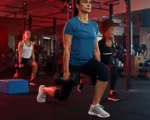Repetitive strain injuries (RSIs) are becoming increasingly common in today’s world, impacting people in diverse fields like office work, athletics, and healthcare. These injuries are often underestimated until they severely affect daily functionality and productivity. For healthcare providers, athletes, and office workers alike, understanding RSIs not only helps in prevention but is also crucial for addressing symptoms early.
This article provides a detailed look at RSIs, their causes, symptoms, and treatment options, along with practical strategies for minimizing risks.
What is a Repetitive Strain Injury (RSI)?
An RSI, also known as a repetitive motion injury, refers to damage caused by repeated stress or motion affecting your muscles, nerves, and tendons. Common examples include typing for prolonged periods, swinging a tennis racket, or working in poorly designed environments where poor posture prevails.
Although moderate repetition of movements can promote flexibility and joint health, too much, especially under physical stress or in unnatural positions, can lead to fatigue, pain, and restricted motion.
Common Symptoms of RSIs
Symptoms of RSIs vary depending on the severity and areas of impact. Commonly affected regions include the wrists, hands, elbows, shoulders, neck, and knees. Key signs of RSIs are:
- Pain ranging from mild to severe
- Swelling or inflammation
- Tingling or numbness in the affected area
- Stiffness in joints
- Muscle weakness
- Limited range of motion
- Difficulty gripping objects or fine motor coordination
Ignoring these symptoms may worsen the condition and lead to complications requiring long-term intervention.
Common RSIs by Activity
Different activities contribute to distinct RSIs, depending on which part of the body sees overuse. Examples include:
- Carpal Tunnel Syndrome (Office Workers): Affects wrists and occurs from continuous typing or using a mouse.
- Tennis Elbow (Athletes): Results from repeated gripping or arm movements, causing pain in the elbow tendons.
- Shin Splints (Runners/Dancers): Caused by repetitive pressure on the lower leg, common in activities involving running and jumping.
- Tendinitis and Bursitis (Construction Workers and Musicians): Repeated strain causes inflammation in tendons and fluid-filled sacs that cushion joints.
Who is at Risk? Key Groups Affected by RSIs
Certain groups are more prone to RSIs due to the nature of their tasks or professions.
1. Office Workers
Professionals working at desks often face RSIs related to typing, clicking, or poor workstation ergonomics, leading to wrist, arm, and shoulder issues.
2. Athletes
Movements repeated frequently in sports, such as pitching in baseball or swinging a tennis racket, increase strain on specific joints or muscle groups.
3. Healthcare Providers
From lifting patients to conducting intricate procedures, healthcare professions involve repetitive physical demands that can strain muscles and joints.
4. Construction and Trades Workers
Using vibrating equipment or repetitive manual labor exposes workers to prolonged wear on muscles, tendons, or bones.
5. Musicians and Artists
Long hours of practice can strain hands, arms, or posture, leading to conditions like tendinitis or carpal tunnel syndrome.
Treating RSIs
Treatments vary depending on the type and severity of the injury, ranging from self-care methods to more advanced medical treatments.
1. Immediate Relief
- R.I.C.E. Method (Rest, Ice, Compression, Elevation): Reduces swelling and pain for minor strains.
- Over-the-Counter Medications (NSAIDs): Help alleviate immediate soreness and discomfort.
2. Long-Term Solutions
- The M.E.A.T. Method (Movement, Exercise, Analgesics, Treatment): Focuses on restoring function through targeted exercises and physical therapy.
- Physiotherapy: Stretches and exercises to strengthen muscles and improve posture are essential. Healthcare providers often combine this with tissue massage and ergonomic advice.
- Steroid Injections: A short-term solution for reducing swelling in severe cases.
- Surgery (Last Option): Required only in extreme cases, such as severe nerve compression or ligament tears.
Prevention Strategies for RSIs
While it may not always be possible to prevent RSIs entirely, incorporating relatively minor changes in daily activities can significantly reduce risks.
On the Job
- Set up ergonomic workstations with adjustable chairs and desks.
- Keep neutral wrist positions while typing or using a mouse.
- Take regular breaks and stretch frequently throughout long work hours.
On the Field or Gym
- Engage in proper warm-ups and cool-downs before and after intense activities.
- Alternate training routines to avoid over-straining specific muscle groups.
- Invest in proper footwear and gear for physical activities.
Daily Habits
- Incorporate rest days into training or work schedules to recover properly.
- Prioritize hydration to reduce fatigue and muscle cramps.
- Be mindful of posture during both sitting and standing tasks.
Final Thoughts
Repetitive strain injuries, while often overlooked, can have a significant impact on health, productivity, and performance if left untreated. Identifying the symptoms and taking proactive steps to prevent and manage RSIs will not only improve quality of life but also offer long-term health benefits.
Whether you’re typing at a desk, practicing hours for the next recital, or competing at the highest levels in sports, no one is immune to RSIs. The key lies in understanding your body’s limits, adopting ergonomic habits, and seeking help at the first signs of strain.
If you experience lingering discomfort or stiffness, we recommend consulting a healthcare professional for a tailored approach to treatment and prevention. Taking early action could make all the difference in keeping you active, comfortable, and pain-free.








